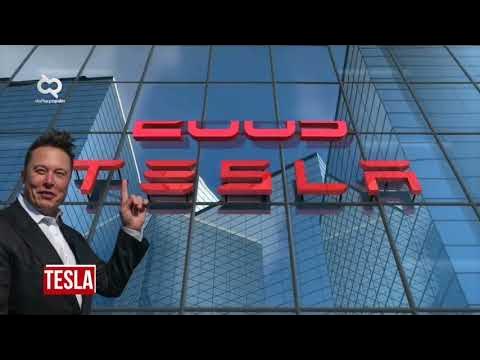How Tesla Builds Electric Cars | Tesla Motors Part 2 (WIRED)
Summary
TLDRIn October 2010, Tesla acquired a former GM-Toyota joint venture factory in Fremont for a low price during the industry's struggle. They revamped the factory, aiming for a clean, bright, and open environment similar to SpaceX's, to foster quality production. With 160 advanced robots and a focus on automation, they also recognized the need for human intelligence, leveraging talent from nearby universities. The Model S's unique components required extensive in-house processes, including machining, coding, and painting, leading to high integration and speed, which are crucial for innovation and adaptability. The factory holds significant potential for future growth.
Takeaways
- 🏭 The Tesla factory in Fremont was previously a joint venture between General Motors and Toyota called NUMMI, which was acquired by Tesla at a low price during a struggling industry period.
- 🚀 The factory was refurbished with inspiration from the clean and open environment of the SpaceX factory, emphasizing a bright and quality workspace.
- 💡 The factory design includes white ceilings and columns, and the addition of skylights to create a sense of ease and quality, which is believed to enhance the production of quality products.
- 🤖 Tesla utilizes about 160 state-of-the-art robots for diverse tasks, highlighting the importance of automation for repeatability and accuracy in manufacturing.
- 🧠 Despite the efficiency of robots, the script emphasizes the importance of human intelligence, suggesting a balanced approach where humans are utilized for tasks that benefit from their intelligence.
- 🌟 The factory's location in Silicon Valley allows access to a pool of highly educated talent from prestigious universities, which is leveraged to improve automation.
- 🚗 The Model S electric vehicle has unique components like drive units, battery packs, and modules that are not found elsewhere, requiring extensive in-house manufacturing processes.
- 🔧 Tesla performs about 95% of its manufacturing processes in-house, including machining, coding, painting, and the production of the central display, indicating a high level of integration.
- 🔄 The in-house manufacturing allows for speed, innovation, adaptability, and flexibility, which are seen as intrinsic values for the company's future growth.
- 📈 The script suggests a significant potential for growth, with opportunities to expand the product line and bring more offerings to the market.
- 🛠️ The Tesla factory represents a commitment to continuous improvement in process efficiency and a unique approach to combining automation with human expertise.
Q & A
What was the factory in Fremont before Tesla acquired it?
-The factory in Fremont was previously the home of NUMMI, a joint venture between General Motors and Toyota.
Why was Tesla able to purchase the factory at a low price?
-Tesla was able to purchase the factory at a low price because the auto industry was struggling at the time.
What was the state of the Tesla factory when they first acquired it?
-The Tesla factory needed to be refurbished from scratch when they first acquired it.
What was the inspiration for the design of the Tesla factory?
-The design of the Tesla factory was inspired by the SpaceX factory, which was clean, bright, and open.
What changes did Tesla make to the factory to improve the work environment?
-Tesla painted the ceilings and columns white, added skylights for natural light, and focused on creating a quality and comfortable work environment.
Why is the use of automation important in the Tesla factory?
-Automation is important in the Tesla factory for process efficiency, repeatability, and accuracy of motion in tasks.
How many robots does the Tesla factory utilize, and what are they capable of?
-The Tesla factory utilizes about 160 robots capable of performing very diverse tasks with the latest technology available.
What is the advantage of having highly educated people in Silicon Valley working on Tesla's automation?
-Highly educated people from nearby universities can help improve the automation processes, leveraging their talent and knowledge.
What makes the production of the Model S unique compared to other vehicles?
-The Model S is unique because many of its components, such as the drive units, battery pack, and battery modules, do not exist anywhere else and require more sub-processes within the factory.
What percentage of the production process does Tesla handle in-house?
-Tesla handles about 95% of the production process in-house, including machining, coding, painting, and the center display.
What are the benefits of having a high level of integration in the Tesla factory?
-A high level of integration speeds up production, enhances innovation, adaptability, and flexibility.
What opportunities does the future hold for the Tesla factory in terms of growth and product offerings?
-The future holds opportunities for growth and bringing more products to the market, with huge potential for the Tesla factory.
Outlines

此内容仅限付费用户访问。 请升级后访问。
立即升级Mindmap

此内容仅限付费用户访问。 请升级后访问。
立即升级Keywords

此内容仅限付费用户访问。 请升级后访问。
立即升级Highlights

此内容仅限付费用户访问。 请升级后访问。
立即升级Transcripts

此内容仅限付费用户访问。 请升级后访问。
立即升级浏览更多相关视频

🔍 Why Tesla's Stock Price is so LOW📉!

Ultrasound Gel Manufacturers

NEW Tesla Quietly Released | You Can Buy It Now

Kasus Pelanggaran Manajemen Keberagaman : Kasus Rasisme Yang Terjadi Pada Lingkungan Kerja Tesla

Want To Be A Photographer? Get This $90 Camera

Noodgedwongen vernietigt hijskraan dure restauratie !!
5.0 / 5 (0 votes)
